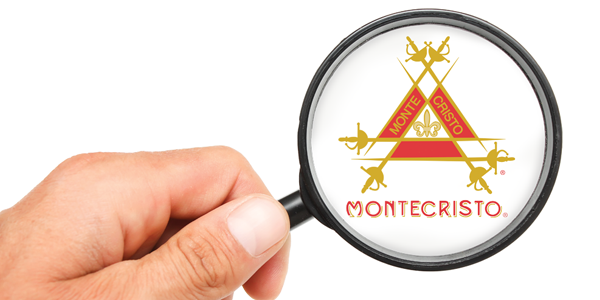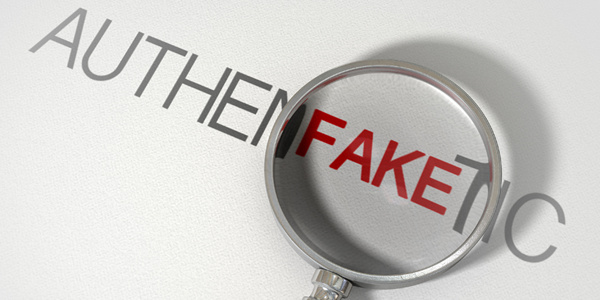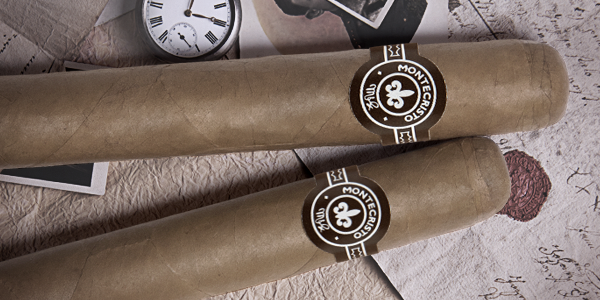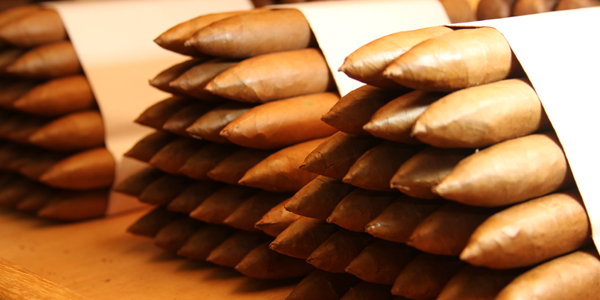How to Spot a Fake vs. A Real Cuban Montecristo
I guarantee you that if you have bought more than 10 “Cuban” cigars in the United States, you have smoked a fake Cuban cigar. So, it follows, if any of those cigars were presented as Montecristos, then the chances are high that you’ve smoked a fake Montecristo. The same goes if you’ve bought a “Montecristo” on the streets of Havana for “such a great price, my friend.” Honestly, with a little bit of education that is within easy reach, you need never suffer a fake Cuban cigar again. We’ve written about spotting fake Cubans before, but now, we’re going to put the 411 in your lap when it comes to spotting a fake Montecristo vs. a real Montecristo.
The Band
Right now, the cigar band on the Montecristo is brown. It has squiggly gold lines. The gold lines are bordered by white lines. The gold fleur-de-lis (a symbol of French royalty, as in The Count of Monte Cristo) is in the middle of the band, with “Montecristo” on top, “Habana” on the bottom, with white dots on both sides.
The Fleur-de-lis
A telling sign of authenticity is the fleur-de-lis being embossed (raised) in gold on the band. This has been the case since 2013. When telling the difference between a fake vs. real Montecristo, if the fleur-de-lis is flat when you run your finger over it, you’ve got a fake band. The fleur-de-lis should be perfectly centered. If it’s not, then your cigar might be fake.
The Gold Squiggles
The gold squiggles are the same color as the fleur-de-lis, though not raised, if the band is authentic. The gold squiggles form a wave-like pattern inside the white border which stretches around the backside of the band. The pattern is symmetrical all the way around. Uneven lines, breaks in the design, or faded ink indicate a fake.
Band Coloring
The color of the band became darker and redder-brown in 2007. It’s still glossy. Fakes are often a little bit green. Fake Montecristo bands can also reflect a washed-out sienna color. If the band is printed on shabby or cheap paper, it’s not real. The reddish-brown color of a real Montecristo cigar band has a noticeable sheen when you hold it under the light.
Very Exact Dots
The two white dots on the band are embossed and are very white. No ecru here. Look for precise circles. Anything blurry is likely fake. The dots will line up perfectly, too. If they are not symmetrical, your Montecristo is not a real Cuban.
The Band May Be Real But…
Even if the band is real, the cigar itself could be fake. A factory in the Dominican Republic was recently among the biggest producers of fake Montecristos, but the bands were almost perfect. You could see the fleur-de-lis was not always right in the middle. The problem is that even among real Cuban Montecristos, the bands are not always uniform. What can a BOTL do to really tell a fake Montecristo vs. a real one?
The Taste
Smoke it. If you know you have had a real Montecristo No. 2 vs. a fake, for example, then you know what it should taste like. Classically, the flavor of the Monte 2 will exhibit a rich leathery component along with some cinnamon and nutmeg notes. You might also sense baking bread and almonds. The true marker of this Figurado though is its slightly acidic woodiness. It’s not overwhelmingly strong and, I’d say, on the medium end of medium-full. In short, this is a complex smoke. If your cigar tastes like just one thing throughout, it’s likely a fake.
The Color
Many think Cuban cigars have darker wrappers than they actually do. Not so. The outer leaf on the Montecristo (not the Maduros) is light brown, leaning a bit to the color of a cedar spill (the piece of cedar you light a cigar with). A little yellow is in there. If it’s not close to that color – and we all know real Cuban cigars can be very inconsistent in terms of color – then you’ve likely got a fake.
Deconstruction
Another, not particularly pleasant, way to tell if the cigar is fake is to take it apart. First, however, look closely at what should be a triple-cap on the head of the cigar. If it seems bumpy, that’s a hint the construction is shoddy, indicating a fake.
Wrapper
The next step is to cut off the triple-cap (or just the tip in the case of a Torpedo) to expose the end of the wrapper. Grab it and begin to unravel the top leaf from the binder. Take notice of the wrapper’s thickness. If it’s very thin and brittle, it’s likely fake as the wrappers are generally thicker so that they can hold the oils that make the cigar tasty. Oh, the wrapper should be fairly oily.
Binder
Once you have the wrapper off, take a look at the binder. The main thing you’re looking for here is thickness. This is a bit of a Goldilocks moment. Not too thick, not too thin. But definitely not too thin.
Filler
So, you’ve gotten this far and still aren’t sure. If the leaves inside the cigar are not exclusively long-filler, you know you’ve got a fake. If there are some long leaves put together in an accordion style, but small bits of tobacco fall out, you’ve got a fake. Mixed-filler is a dead giveaway.
This should give you a good map to figuring out whether the cigar you have is real. One sure thing, no matter where you’re buying it, the Montecristo No. 2 is an iconic Cuban cigar. It’s not cheap. If you’re being offered a box for, say, $25 on a Havana street corner, just walk away.






